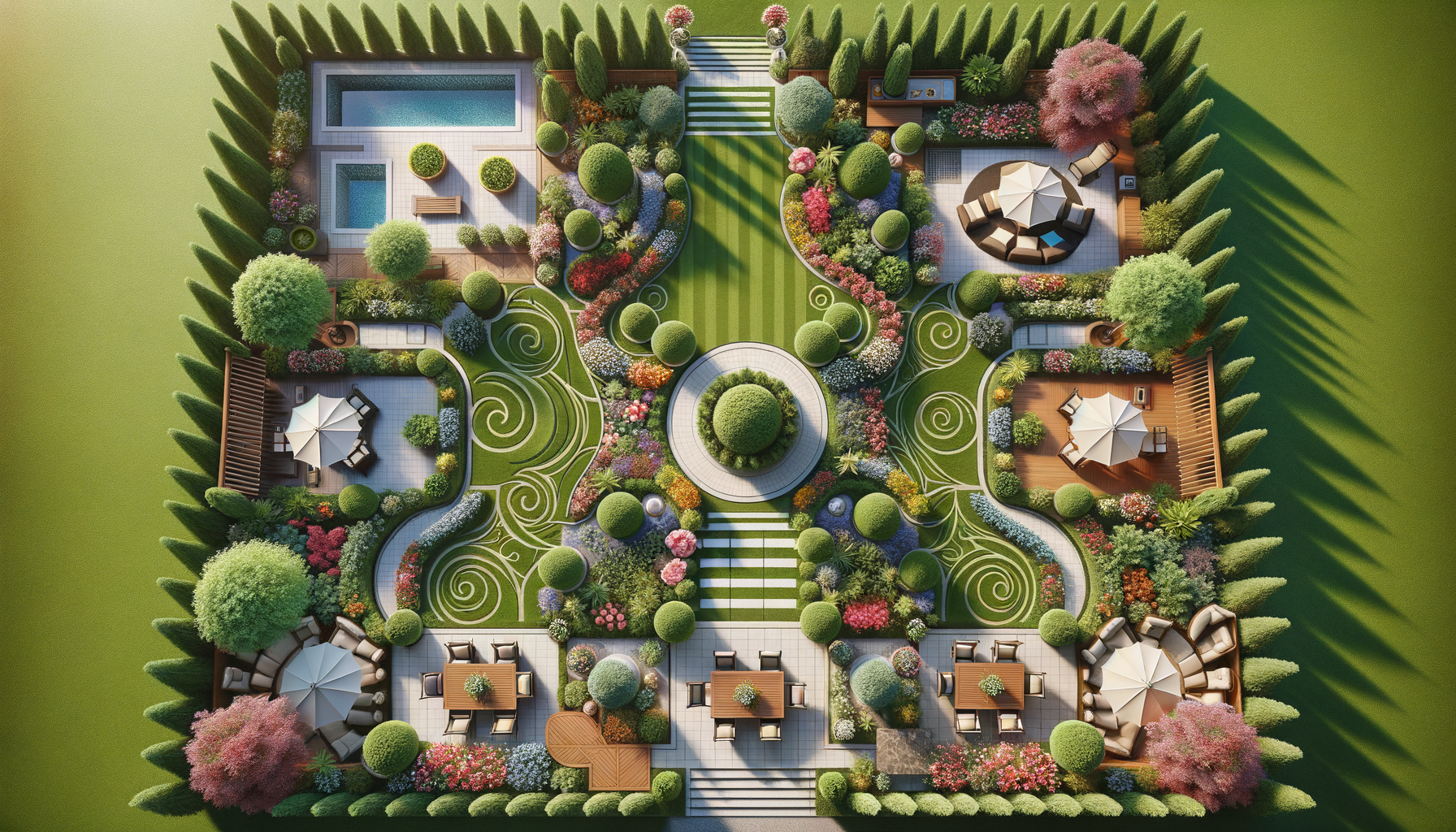The Evolution of Yard Design
Yard design has come a long way from simple garden layouts to intricate landscaping masterpieces. Over the years, the integration of technology into design processes has revolutionized how we approach outdoor spaces. One of the most significant advancements in this field is the use of 3D design software. This technology allows homeowners and professionals to visualize their yard layouts in a three-dimensional space, providing a clearer understanding of how different elements will interact.
The traditional method of yard design involved sketching plans on paper, which often led to discrepancies between the envisioned and actual outcome. With 3D design, these issues are minimized as it offers a realistic preview of the end result. This method not only saves time but also reduces the chances of costly mistakes. By using yard 3D design, individuals can experiment with different layouts, plant placements, and structures without physically altering their yard.
Furthermore, 3D design tools have made yard planning more accessible to those without a professional background in landscaping. These tools often come with user-friendly interfaces and a plethora of templates, making it easier for anyone to create a personalized outdoor space. The evolution of yard design through 3D technology has democratized the process, allowing more people to engage in creative and precise planning.
Benefits of Using 3D Design for Your Yard
Utilizing 3D design for yard planning offers numerous benefits that enhance both the process and the final result. One of the primary advantages is the ability to visualize the space in a realistic manner. This perspective helps in making informed decisions about the placement of various elements, such as plants, pathways, and water features.
Another benefit is the precision that 3D design brings to the table. With accurate measurements and scaling, homeowners can ensure that every component fits perfectly within the designated area. This precision is crucial when working with limited space, as it maximizes the utility of every square foot.
3D design also facilitates better collaboration between homeowners and landscaping professionals. By providing a clear visual representation, both parties can communicate ideas more effectively, ensuring that the final design aligns with the client’s vision. Additionally, the ability to experiment with different scenarios and make adjustments on the fly makes the design process more flexible and adaptable to changes.
- Realistic visualization of the yard
- Accurate measurements and scaling
- Enhanced communication with professionals
- Flexibility in design adjustments
Essential Elements to Consider in Yard 3D Design
When embarking on a yard 3D design project, several essential elements must be considered to create a cohesive and functional space. The first element is the layout. A well-thought-out layout ensures that all components of the yard work harmoniously together. This includes pathways, seating areas, and garden beds.
Lighting is another crucial factor. Proper lighting enhances the aesthetic appeal of the yard and extends its usability into the evening. 3D design tools allow you to simulate different lighting conditions, helping you choose the right fixtures and placements.
Water management is also vital in yard design. Incorporating features such as drainage systems and water-saving irrigation can prevent issues related to waterlogging and promote sustainability. With 3D design, you can visualize how water will flow through your yard and make necessary adjustments to ensure efficient water use.
- Strategic layout planning
- Effective lighting design
- Proper water management
- Incorporation of sustainable practices
Incorporating Personal Style into Your Yard Design
One of the joys of yard design is the opportunity to express your personal style. 3D design tools offer a platform to experiment with various themes and aesthetics, allowing you to create a space that reflects your personality. Whether you prefer a minimalist approach or a vibrant, eclectic garden, 3D design can bring your vision to life.
Consider incorporating elements that hold personal significance, such as a family heirloom statue or a favorite type of flower. These touches add uniqueness and sentimental value to your yard. Additionally, 3D design enables you to try out bold color schemes and unusual plant combinations without the risk of commitment.
Personal style in yard design is not just about aesthetics; it also involves functionality. Designing a space that suits your lifestyle, whether it’s a play area for children or a tranquil retreat for relaxation, ensures that your yard is both beautiful and practical. With 3D design, you can explore different configurations to find the perfect balance between style and function.
Future Trends in Yard 3D Design
The field of yard 3D design is continually evolving, with new trends emerging that reshape how we approach outdoor spaces. One of the most exciting trends is the integration of virtual reality (VR). VR technology allows users to immerse themselves in a fully interactive version of their yard design, offering a deeper understanding of the spatial dynamics.
Sustainability is also becoming a key focus in yard design. As environmental awareness grows, more designers are incorporating eco-friendly practices and materials. 3D design tools are evolving to include features that help users plan sustainable landscapes, such as native plant suggestions and energy-efficient lighting options.
Another trend is the use of smart technology in yard design. From automated irrigation systems to app-controlled lighting, smart technology is making yards more convenient and efficient to maintain. As 3D design software continues to advance, it will likely include more integrations with smart home devices, allowing for seamless management of outdoor spaces.
- Integration of virtual reality
- Focus on sustainability
- Incorporation of smart technology
- Advancements in design software


Leave a Reply